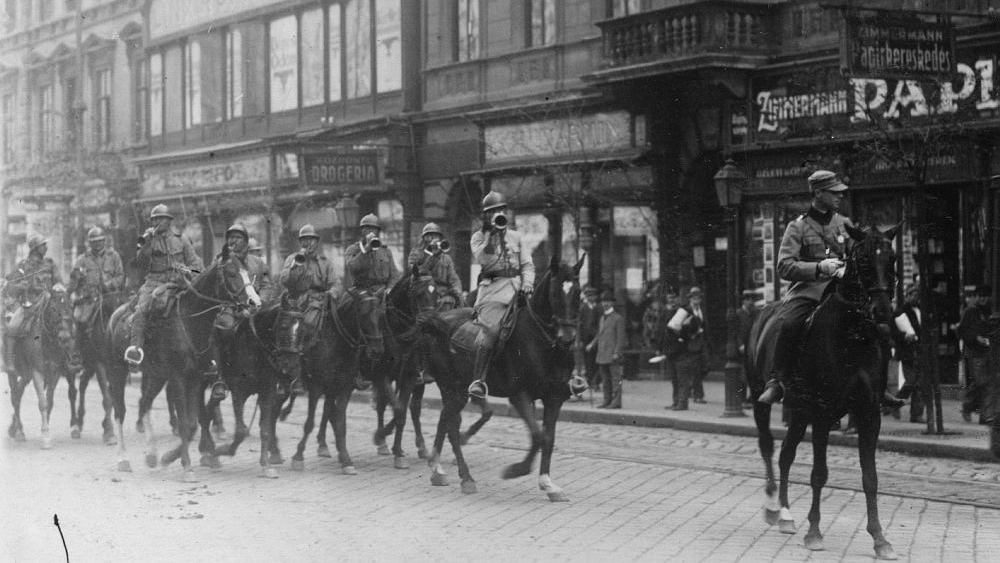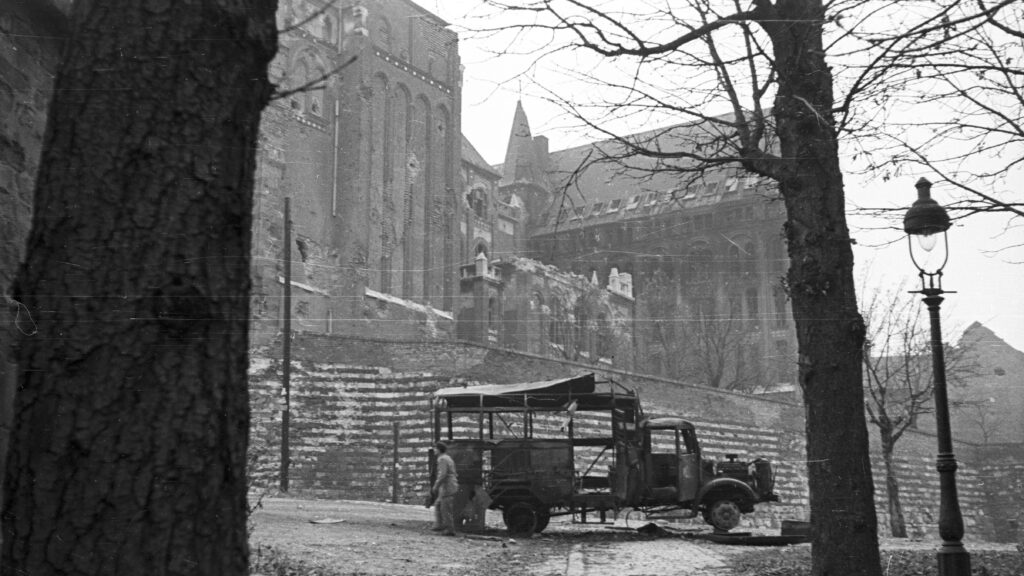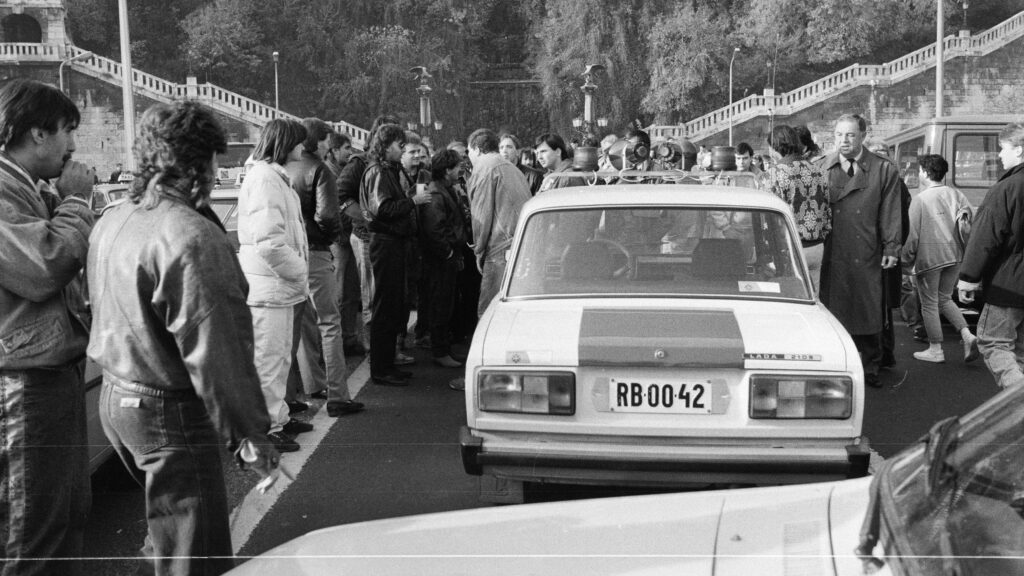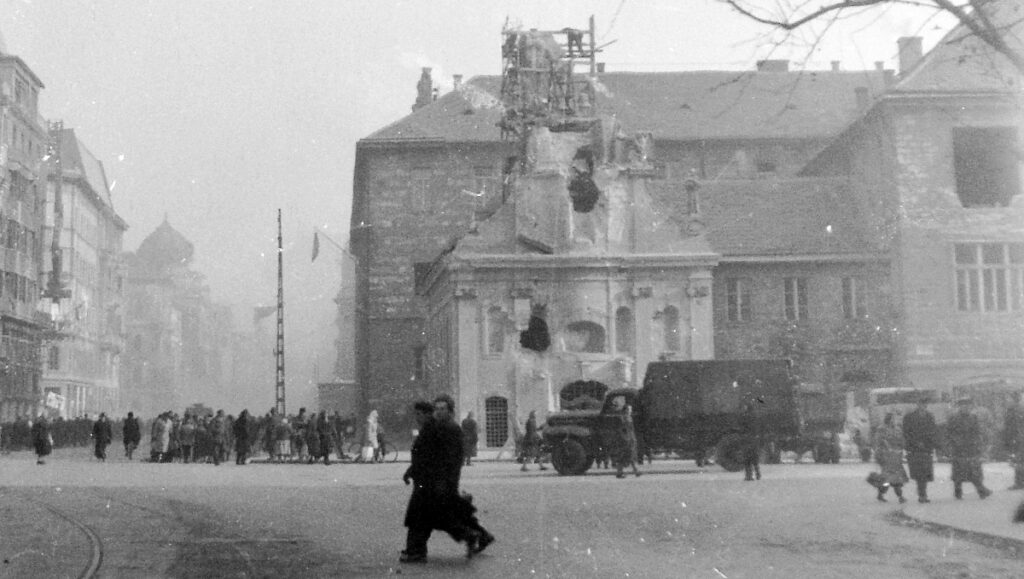In the late summer of 1919, Romanian troops entered Budapest, bringing an abrupt end to the short-lived Hungarian Soviet Republic—but also unleashing a wave of violence, looting, and abuse that left deep scars on the city and its residents. The last Hungarian offensive, launched on July 20 by the Hungarian Red Army, collapsed within days, allowing Romanian forces to set their sights on Budapest. The first Romanian troops reached the capital on 3 August, and Budapest—including Buda Castle—soon came under Romanian occupation.
The Romanian occupation not only meant the end of Bolshevism, but also brought with it another wave of physical violence, robberies, looting, and sexual assaults against the population of the capital. Here, we aim to focus primarily on the present-day boundaries of District I, although it must be noted that many other atrocities took place within the district’s contemporary borders as well—such as the case of Anna Jakubovics, a young maid who, on the evening of 5 October around 9pm, was escorted by a larger Romanian patrol from the Franz Joseph Bridge (today’s Liberty Bridge) down to the Danube embankment, ‘where all 20 Romanian soldiers raped her,’ and then robbed her, taking even the coat from the unconscious young woman. After the girl regained consciousness, she filed a report with the police, which is the source of our knowledge about the case.[1]
One of the first cases connected to our more narrowly defined field of interest is the complaint filed by Dr Károly Kiss, an unemployed lawyer living at 10 Fő Street, which at the time belonged to District II. As he wrote in his report of 27 August 1919:
‘On the occasion of the Romanian occupation, the commander of the Romanian army issued a proclamation promising personal and property security. In spite of this, the soldiers of the unit stationed in the Citadel on Gellért Hill repeatedly break into my orchard beneath the Citadel on a daily basis, steal my peach and apple harvest, destroy my fruit trees and nursery plants, and when either I or my men attempt to expel them from my garden, they threaten us with the firearms in their hands, placing our lives in danger. On the evening of St Stephen’s Day [20 August], two shots were even fired at two members of my family as they walked in my garden, and it was only by sheer luck that neither shot struck them. For these reasons I have already submitted several written complaints to the Romanian command, most recently on two occasions, all of which have been without result…The damages caused to me thus far by the Romanian army can be estimated at around 8,000–10,000 crowns…’
‘They threaten us with the firearms in their hands, placing our lives in danger’
On 15 September, Lajos Kövesi, residing at 1 Alagút Street, reported the following: ‘In the name of both myself and all the residents of the house, I lodge this complaint against unknown Romanian soldiers who, after becoming intoxicated day after day in the tavern located on the ground floor of the building, come out into the courtyard and recklessly fire their weapons with live ammunition, constantly endangering the bodily integrity and lives of the residents. On one occasion, a bullet even penetrated an apartment on the second floor; the most recent shooting took place yesterday evening, Sunday.’
On the same day, Jakab Gerő, a 40-year-old Jewish jeweller residing at 42 Fő Street, filed a complaint: ‘This morning, between 4:00 and 4:30am, six armed Romanian soldiers forced open the iron shutter of the door to my shop premises and stole jewellery worth between 8,000 and 10,000 crowns. Under the cover of night, the Romanian soldiers escaped with the jewellery.’
Similar cases can also be found in the later months. It was evidently the same group causing trouble on Fő Street during the night of 3–4 October, as several complaints were filed at that time. György Splényi, from Apartment 5 on the first floor, reported the following:
‘At 3am last night, three armed Romanian soldiers appeared at our apartment, and after conducting a weapons search, they took from the wardrobe one green jacket, one pair of black riding trousers, one pair of blue riding trousers, two razors, four silk handkerchiefs, and one brown leather cigar case decorated with two horse heads; from József Szikszay, who lives in the neighbouring room, they took a gold signet ring, a lighter, and a cigarette case made of imitation silver. I am unable to provide an estimate of our losses at present.’
Jenő Schwerzel, a 27-year-old medical trainee, reported the following from Apartment 5 on the third floor: ‘At 10 pm last night, three armed Romanian soldiers came to my apartment and, after carrying out a search, took a double-cover silver pocket watch with two marksmen engraved on the back, my 12-gram gold wedding ring, a gold ring set with a ruby, one opera glass, a gold cross of merit, a bronze plaque, one large gold medal, and a brown leather women’s wallet containing 32 crowns. My losses amount to 3,000 crowns.’
Other complaints show that the Romanian occupiers did not even respect Hungarian police or military officers. According to the report of policeman trainee Imre Kiss, filed on 7 October, when he noticed a Romanian soldier sitting on the rear step of tram number 3 at Döbrentei Square:
‘I warned the Romanian soldier not to ride on the step, as the iron railing running alongside the tram could knock him off. At this, he drew his bayonet and struck me in the chest with it, though I was not injured. He then pulled a revolver from his pocket and aimed it at me, ready to fire. To protect myself, I drew my sword, whereupon the Romanian soldier tried to put the revolver back in his pocket. I took the revolver from him to see whether it was loaded, but it was not, and I returned it to him. At this point a Romanian gendarme in civilian clothes got off the tram, where several other Romanian soldiers had gathered, and he incited them to take me to the Romanian command. Meanwhile, the passing American mission also noticed the crowd gathering, came over, and took both the Romanian gendarme and the soldier with them.’
‘To protect myself, I drew my sword, whereupon the Romanian soldier tried to put the revolver back in his pocket’
János Buza Kiss, a 25-year-old first lieutenant who lived at 36 Iskola Street in the Víziváros area of District I, ran into trouble on the Pest side in November: ‘A Romanian patrol of two men stopped me on Rákóczi Road and asked for my papers. I showed them my identification, but the Romanians did not accept it. They took my wallet, which contained 1,000 crowns, and released me at the Danube embankment near the Chain Bridge.’
In addition to the above complaints, we also have the confidential daily reports of the Budapest police, which summarized important events and arrests at 24-hour intervals. According to these reports—among many other examples—on 4 October at 11pm at Döbrentei Square, ‘two unidentified Romanian soldiers attacked Károly Kosch, a waiter, and robbed him of 7,800 crowns.’ On 13 October, at the Széna Square market, ‘a Romanian patrol of six men appeared and unilaterally set the prices of foodstuffs, then made purchases at the prices they had fixed. When a police officer on duty questioned them about this procedure, they detained him, and he was only able to escape thanks to the chaos caused by the large number of people gathering.’
At the same location, on 22 October around 6 pm, ‘a Romanian military vehicle, due to fast and careless driving, ran over Adolf Nemes, a financial auditor, who died of his injuries while being transported to the hospital. The crowd present detained the two Romanian drivers, but Romanian military detectives Alter Agestein and László Rafael dispersed the crowd with clubs and helped the drivers escape. When the summoned policemen attempted to take the two detectives into custody, a Romanian major and a Romanian first lieutenant, who then arrived on the scene, took the two detectives away to the Romanian military command stationed at the Pálffy Square barracks.’ An interesting detail is that the Adolf Nemes in question was none other than the father of Dezső Nemes—the later notorious communist historian and politician—who had already lost his mother years earlier and was thus left a complete orphan.
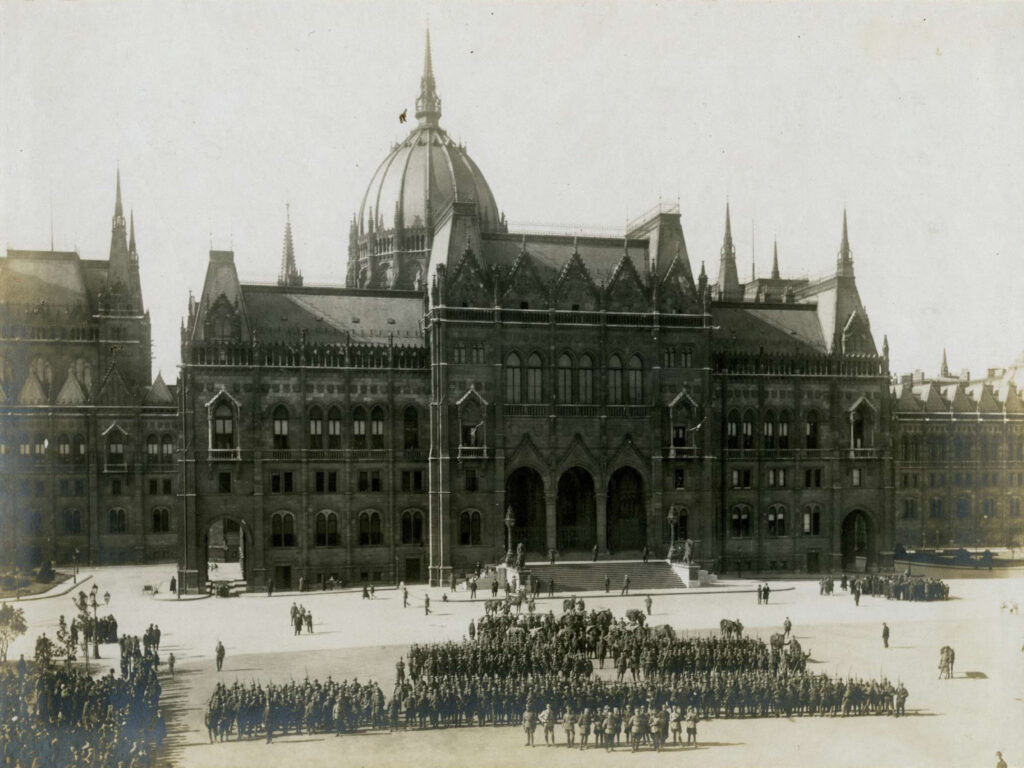
Finally, we also have a folder entitled ‘Requisitions,’ compiled by the Hungarian government for the post–World War I peace negotiations on the atrocities of the Romanian occupation. Although there were no plants, factories, or farms in the Castle District that could have been plundered, District I still made it onto the list with one entry: from the ‘Office of Material Sales’ at 3 Vérmező Street, Romanian soldiers carried away railway materials, construction materials, and clothing items. At the time, the total damage was listed as ‘still unknown’.
With complaints of this kind, the police could do little more than translate them into Romanian and forward them to the command of the Romanian army’s Buda garrison—headquartered in the Nándor Barracks in the Castle (nowadays the building of the Hungarian Ministry of Defence). There is no trace that anyone ever took action against the looting, violent soldiers. The Romanian garrison, in any case, did not communicate much with the local population; only a single order of theirs, from August, has survived in the Budapesti Közlöny.
According to this order: ‘The commander of the Romanian army’s Buda garrison, Lieutenant Colonel I Gerota, by means of posters displayed in the streets and factories of Buda, ordered that by midnight on 9 August the citizens were obliged to hand in any weapons in their possession—revolvers, swords, daggers, ammunition, and hunting rifles—at the Nándor Barracks, the Hadik Barracks, or the Várkert Kiosk on the Danube embankment. Beginning on 10 August, searches will be carried out in every house, and anyone found with any kind of weapon will be arrested and brought before a court-martial.’
It is quite telling that the order was only published on the 10th, which forced the authorities to extend the deadline to 9 p.m. that evening. The notice also encouraged residents to denounce communists: ‘Reports may be made at the Nándor Barracks, naturally only on the basis of serious evidence.’ Finally, the notice suggested that complaints could also be made against Romanian soldiers committing abuses: ‘For the reassurance of the city’s inhabitants, the commander announces that any complaints concerning the conduct of Romanian soldiers should be addressed to the Nándor Barracks, where every case will be examined and dealt with.’[2]
Of course, in light of the above documents, it is questionable what result such complaints could ever have had.
[1] For all police reports quoted here see: Hadtörténeti Levéltár (Military History Archives), I 53 Box no 16.
[2] Budapesti Közlöny, 10 Aug 1918.
Related articles:

